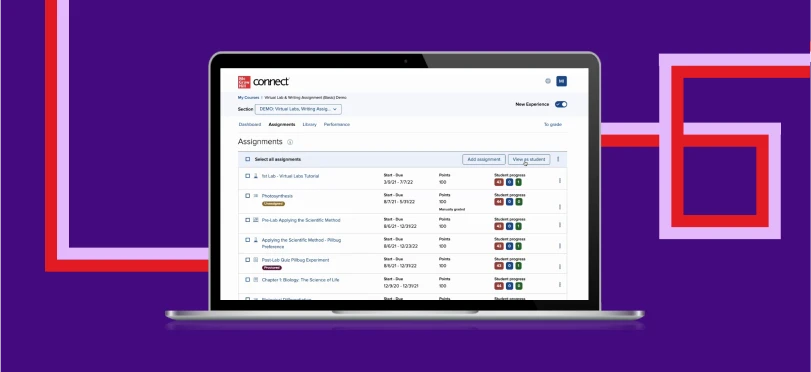Navigating the New Normal: Three Years of Digital Learning in Higher Education
Discover the journey of higher education over the past three years, examining the integration of digital and traditional teaching methods post-pandemic.

Can you believe it's been three whole years since we embarked on the unexpected journey of digital learning in higher education during the coronavirus pandemic?
It's incredible to think about how our classrooms, once buzzing with in-person interactions, were swiftly transformed into digital hubs. The COVID-19 era was a whirlwind of change, pushing us out of our comfort zones and into an uncharted territory of online education.
Armed with three years of experience and insight since the onset of the coronavirus pandemic, we now stand equipped with a wealth of knowledge about digital learning and its impact on higher education.
So, let's delve deeper into this evolution. What lessons have we gleaned from this era of digital disruption and innovation? How have these experiences redefined our approach to teaching and learning in the ever-evolving world of higher education?
Lessons from Our Online Odyssey
The digital realm taught us the art of interactive and adaptable teaching. But here's the kicker—online learning also gave us superpowers!
Ever tried conducting a live poll with hundreds of students in a lecture hall? Digital platforms made this a breeze.
Remember the time-consuming process of dividing students into groups, counting off, and hoping students remember their number? Digital platforms enable grouping with ease and make it easy to design groups with intentionality.
We could create intimate discussion groups in a snap, turning vast virtual classrooms into cozy learning circles.
We harnessed the power of multimedia—videos, podcasts, and more—to make complex concepts more digestible and engaging. This pattern shift compared to a traditional lecture-heavy classroom positively impacted retention.
Digital tools also enhanced the feedback loop. With online quizzes also came instant grading, enabling students to receive timely feedback.
Assessment methods have also evolved, combining digital and physical elements.
In essence, the pivot to digital learning was not just about overcoming a temporary challenge; it was about embracing a new, enriched way of teaching and learning—one that three years later, has been hardwired into our approach to educational pedagogy.
Mixing Digital with Traditional: The Perfect Blend
Now, we’re taking these digital gems and spicing up our traditional classrooms with them. Picture a blend of face-to-face interactions with the efficiency of digital tools. It’s like Miley Cyrus said in her mega-hit from my childhood, “The Best of Both Worlds”.
Hybrid models, which combine in-person and online sessions, allow for greater flexibility. Some educators have adopted a schedule where theoretical aspects are taught online, while practical, hands-on sessions are conducted in person.
Teachers might use online platforms for quizzes and tests to give immediate feedback, while in-class presentations or group projects assess students' ability to apply knowledge in a collaborative setting.
Most importantly, however, educators should recognize and capitalize on the unique strengths of both the online and in-person learning environments.
The Power of Face-to-Face Interaction
In-person classes excel in fostering lively, spontaneous discussions, making them ideal for debate-heavy subjects or topics that benefit from real-time interaction. The physical presence in a classroom creates a dynamic atmosphere that encourages active participation and immediate feedback.
For instance, in my international business course, in-person discussions can lead to more nuanced debates and a deeper understanding of diverse perspectives. The immediacy (no bandwidth issues here!) and emotional engagement (no more competing with those Chrome tabs!) is impossible to replicate online, making it a powerful tool for subjects that thrive on discussion and personal exchange.
Leveraging Online Flexibility
On the other hand, online learning environments excel in providing flexibility. For example, in a Digital Marketing course, online platforms can host a rich array of multimedia content, such as instructional videos and interactive simulations that allow students to explore different digital marketing strategies and tools at their own pace.
This is particularly advantageous for subjects that are constantly evolving and for subjects where keeping up-to-date with the latest trends and tools is crucial.
Given the speed at which digital marketing evolves, it’s helpful to direct students to hosted resources whether it be Google’s library of training, a LinkedIn learning course, or equipping students with a credential to add value to employers.
Digital platforms also allow for asynchronous discussions, where students can take time to formulate their thoughts and contribute at their own pace, which can be particularly beneficial for introverted students or those who prefer more time to process information.
In my Principles of Marketing class, for instance, which is sometimes taught digitally, students can engage in online forums to analyze and discuss real-world marketing campaigns. This enables deeper critical thinking and learning that isn’t as feasible in a time-constrained, in-person class setting.
Embracing the Future of Education
As we reflect on the past three years, it’s clear that the journey through digital learning has been more than a response to a global crisis; it has been an evolution in the world of higher education. Now, as we blend the best of digital and traditional teaching methods, we are not just returning to 'normal,' we are advancing towards a new, enriched normal.



